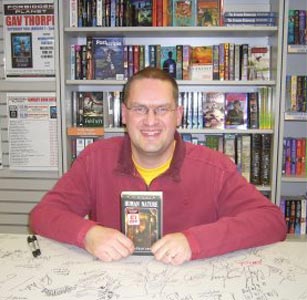|
Click here to return to the main site. Jonathan Green (Author) - Fighting Fantasy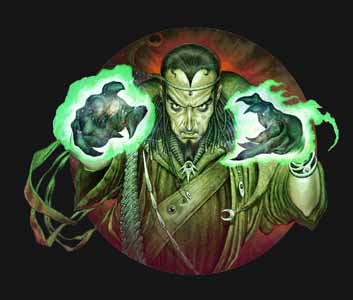 Steve Jackson and Ian Livingstone’s pioneering range of Fighting Fantasy gamebooks first hit the shelves way back in 1982 with the release of the now legendary Warlock of Firetop Mountain. Wizard Books are currnetly in the process of lavishly re-packaging many of the original classic books for a whole new audience, alongside some brand spanking new titles. Daniel Lee Salter caught up with Jonathan Green, a veteran Fighting Fantasy author from the original run of Puffin books, who now has the task of crafting all-new adventures for the next generation of readers... Daniel Lee Salter: Following a quiet period, this month sees the major re-branding of the Fighting Fantasy series. What do you think was behind Wizard Book's decision to re-launch the series at this time?
Also, changes have been made to how the rules are presented and how easily the adventures can be accessed, which didn’t happen with Wizard’s first re-launch. Both have been carefully planned to ensure FF gets maximum exposure as well as making it as easy as possible for the latest generation of adventurers to get into the books. A re-launch also provides the publisher with the opportunity to revise the look of the series. The main point of the look of the new editions is to make more of the Fighting Fantasy name and brand. When a new, or re-issued, book comes out there will be no doubt that it is a Fighting Fantasy gamebook. Before, you had to look very closely to see the name Fighting Fantasy on the cover, and there was nothing about the cover art that tied the books in the series together. And of course the lurid green spines were already (thankfully) a thing of the past. The new silver spines look much more impressive! Any efforts to get the books out there and noticed again can only be a good thing. A re-launch will inevitably raise the series’ profile and hopefully the addition of new books - like Stormslayer and Night of the Necromancer - will help to build on the interest generated. DLS: The focus of this re-launch again seems to be on the early works of Steve Jackson and Ian Livingstone. Do you imagine there are any plans to eventually release some of the lesser-known titles from the original Puffin run?
That said, it is of course common knowledge now that Bloodbones, first published in 2006, is being re-printed next year in a new edition. DLS: Your very first Fighting Fantasy book Spellbreaker was released way back in 1993, towards the tail-end of the original Puffin run of books. How did you first become involved with the series? JG: I actually wrote to Puffin when I was still at secondary school with a proposal for my own series of original gamebooks first. (Oh, the arrogance of youth!) Marc Gascoigne, who was consultant editor on the Fighting Fantasy line at the time, kindly wrote back saying that I was welcome to pitch for a FF gamebook, but also warning me that my chances of being published were very slim. It took two years, two entirely different ideas and several revisions before I got my first commission. I then spent the summer break after my second year at university writing Spellbreaker. I was 20 at the time. DLS: Bloodbones was to be the 60th and final original Fighting Fantasy book in the Puffin range, but the series was prematurely curtailed. Tell us the story about this mythical 'lost' adventure which eventually saw publication nearly ten years later? JG: Well, for a start I didn’t know that it was supposed to be the final original Fighting Fantasy book. I know of at least three more titles that were in various stages of development. The editors spent a lot of time discussing how to remarket the series to a younger readership and decided to simplify the books, which I think was a mistake. I think I was proved right as it turned out to be the final nail in the coffin of Puffin’s tenure of the FF series.
However, the fact that Bloodbones wasn’t ever going to see print (as I believed at the time) didn’t stop Amazon offering it for pre-order for years to come afterwards. And so the book became a myth. I eventually broke my silence on the subject through an open letter which was posted online so people at least knew that it was me who had written it and what it was about. And then, in 2002, Wizard Books re-launched the Fighting Fantasy series and with it my hopes of seeing Bloodbones in print one day. I got in touch with Steve Jackson to see if there would be the possibility of writing new gamebooks and he informed me that he had always hoped to see Bloodbones in print one day too. It took a couple more years, but in the end it did. The original Puffin version was only 300 paragraphs long (a consequence of their dumbing down of the series). To bring it back up to 400 paragraphs for the Wizard edition, I reinstated various encounters I had had to cut in the first place, at Puffin’s request, but I also added a fair bit of new material. Ironically, the Background section to Bloodbones begins, ‘It all started ten years ago’. I didn’t put that into the new edition; it had always been there. It just seems strangely prophetic now. DLS: Your brand new Fighting Fantasy adventure Stormslayer is one of the first four books to be released under the new re-launch from Wizard Books - tell us about this all-new adventure.
It takes as its central theme current fears about climate change which also allowed me to exploit an area of the FF setting that hadn’t seen much action in other books. This is something I like doing with my gamebooks (just as I did with Howl of the Werewolf, which promoted a fairly minor back-stage player in the FF milieu into a centre-stage villain). It also plays with the idea that different days of the week, which are associated with different elements in Fighting Fantasy, have an influence on elemental magic too. And can I say that I’m actually really pleased with how well it’s turned out? Well, there you go, I just did! DLS: Are you hopeful that further brand new material will be commissioned by Wizard to complement the repackaging of classic titles? JG: As you probably know, it already has been. I’m currently neck deep in Night of the Necromancer which is unlike any other Fighting Fantasy gamebook you’ve played before, in that the adventure begins with your death. Everything else plays out from that one tragic incident. After that, who knows? But for as long as the guys at Wizard are happy to keep publishing new material, I’ll be happy to write it for them.
JG: With regards to my early titles, yes, I would have to agree. I was young and naive; that’s my excuse anyway. I have to confess that I was one of those people who cheated at gamebooks as I got older - keeping several fingers between pages, always claiming that I was Lucky, etc - and I think I was trying to write something that would challenge, or in fact completely confound, cheaters like me. In the process I think I forgot the idea of a gamebook was for the reader to have a bit of fun. Nowadays I am more interested in giving the reader a fair and satisfying gaming experience. I see myself as being in the entertainment industry. If my adventures end up irritating readers because they’re too hard or they are unjustly punished for erring from the one true path, then I’m not doing a very job of entertaining them, am I? I feel that with the benefit of experience and hindsight I’m much better at judging difficulty levels but there are still times when something will catch you out - a combination of encounters you hadn’t anticipated or how missing out on collecting one item can make subsequent paragraphs an absolute nightmare for players. I would say that from Howl of the Werewolf onwards, my gamebooks offer that fair and satisfying gaming experience I was talking about earlier. DLS: What is your all-time favourite book from the original run?
DLS: Do you ever feel just very slightly miffed that Jackson and Livingstone's names appear boldly on the cover and spine of your work, whilst you, the author, simply get a small credit on page 3? JG: That’s just how it is when you write for Fighting Fantasy. Besides, it’s the names Jackson and Livingstone which sell the series. DLS: Your CV makes for a very interesting read, having written for properties such as Doctor Who, Star Wars, and even Sonic the Hedgehog! Other than Fighting Fantasy, what has proved to be your most rewarding work to date? JG: I would probably have to say my Pax Britannia novels for Abaddon Books. They combine elements of all sorts of things that I love; Victoriana, mad scientists, madder monsters, derring-do, heroes in the best Bond and Holmesian tradition with a good line in pithy put-downs.
I also really enjoyed writing What is Myrrh Anyway? (a non-fiction title about the history and traditions of Christmas) and everything that came after it, including being on Radio 5 Live on Christmas Day in the company of Danny Wallace and Dom Joly! DLS: What are you working on right now, and do you have any interesting plans for the future? JG: As I said, I’m currently writing Night of the Necromancer, another Fighting Fantasy adventure gamebook, but I’m also working on a new Pax Britannia novel called Blood Royal (which is my eleventh novel overall, as it happens). And after that? Well, I’ve already been commissioned to write another two Pax Britannia novels, I’ve got a novella to pen and I’m hoping to try something wholly original, possibly with a certain celebrated artist onboard from the start too. DLS: Thanks a lot for your time, Jonathan.
Stormslayer is available from Wizard Books from 03 September 2009. Click here to buy Stormslayer for £3.89 (RRP: £5.99) Return to... |
|---|
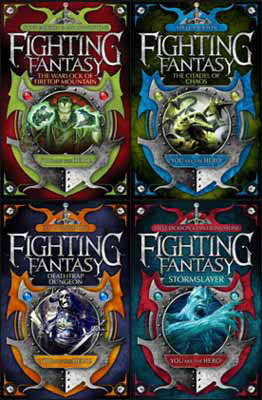 Jonathan Green: The gamebook market has seen something of a revival regarding gamebooks. New official gamebook tie-ins are being published for Doctor Who and Star Wars: The Clone Wars and so it seems only right that the grand-daddy of all gamebook series should get a fresh lick of paint and a proper revival.
Jonathan Green: The gamebook market has seen something of a revival regarding gamebooks. New official gamebook tie-ins are being published for Doctor Who and Star Wars: The Clone Wars and so it seems only right that the grand-daddy of all gamebook series should get a fresh lick of paint and a proper revival.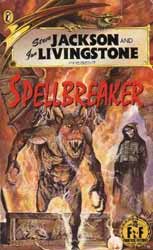 JG: At this stage, I don’t know. That would be entirely up to Steve and Ian, and the powers that be at Wizard Books.
JG: At this stage, I don’t know. That would be entirely up to Steve and Ian, and the powers that be at Wizard Books.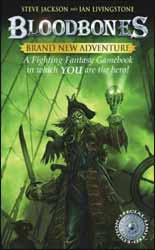 There had been a significant break since the publication of Curse of the Mummy but I was still very disappointed when I heard the news that Bloodbones wouldn’t see publication. I had already finished writing it by then and the illustrations had been completed too.
There had been a significant break since the publication of Curse of the Mummy but I was still very disappointed when I heard the news that Bloodbones wouldn’t see publication. I had already finished writing it by then and the illustrations had been completed too.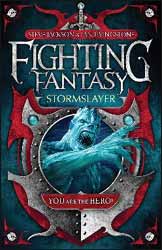 JG: Well, without giving too much away, in it the reader takes on the role of a well-regarded adventurer, known throughout the kingdom of Femphrey. When a bizarre flying machine turns up and starts altering the weather to a catastrophic degree, our hero has to find out who’s behind it, and why, and then stop them.
JG: Well, without giving too much away, in it the reader takes on the role of a well-regarded adventurer, known throughout the kingdom of Femphrey. When a bizarre flying machine turns up and starts altering the weather to a catastrophic degree, our hero has to find out who’s behind it, and why, and then stop them.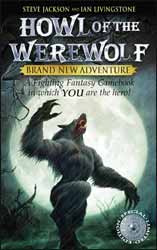
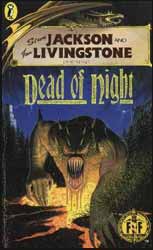 JG: Off the top of my head, Dead of Night, by Jim Bambra and Stephen Hand. There are of course loads that I love but I was a particular fan of Stephen Hand’s work, which went on to influence my own in no small part. The combination of the character in that book, the very dark story told throughout its pages, and Martin McKenna’s brilliant illustrations all worked together to great effect.
JG: Off the top of my head, Dead of Night, by Jim Bambra and Stephen Hand. There are of course loads that I love but I was a particular fan of Stephen Hand’s work, which went on to influence my own in no small part. The combination of the character in that book, the very dark story told throughout its pages, and Martin McKenna’s brilliant illustrations all worked together to great effect.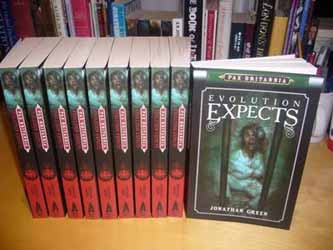 The whole Pax Britannia milieu was my idea and the series has provided me with the opportunity to develop a series of ongoing story arcs for the first time. These different arcs (currently planned as four books a-piece) will ultimately all contribute to one over-arching story arc.
The whole Pax Britannia milieu was my idea and the series has provided me with the opportunity to develop a series of ongoing story arcs for the first time. These different arcs (currently planned as four books a-piece) will ultimately all contribute to one over-arching story arc.